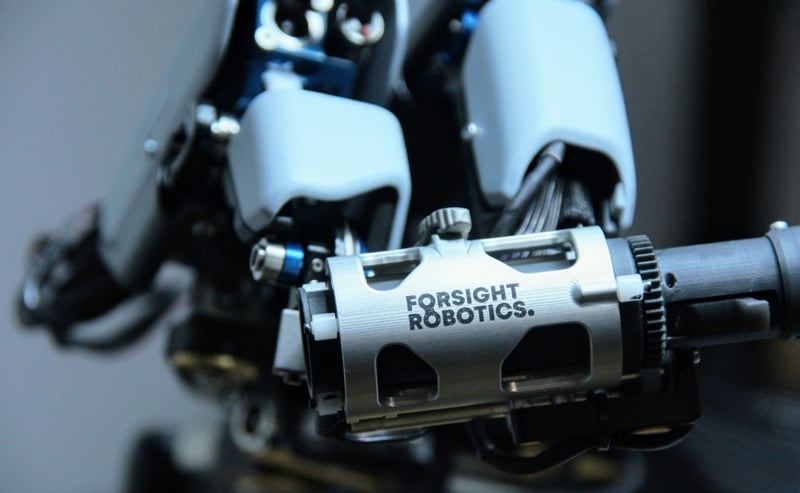Midsize Law Firm Challenges And Opportunities In The World Of AI
AI can enable midsize law firms to do things they never could before. The post Midsize Law Firm Challenges And Opportunities In The World Of AI appeared first on Above the Law.

The midsize U.S. law firm law market often gets overlooked in the press and to some extent by vendors. Part of the reason is definitional: a midsize firm in New York City is far different than one in, say, Duluth, Minnesota. Part of it is the differing client mix. Even the culture of midsize law firms is diffuse. It’s tough to talk about and market to such a diverse group with a broad range of interests and clients. And vendors often don’t understand the challenges that midsize firms face.
That’s why a day-long seminar put on by Legaltech Hub (LTH) in Chicago last week was so compelling. LTH is an “insights and analysis platform” that helps legal tech buyers among, other things (by way of disclosure, Stephanie Wilkins, LTH’s Director of Content, is a regular panelist along with me and several others on Bob Ambrogi’s LegalTech Week roundtable). The conference was billed as a MidLaw Tech and Innovation CLE Seminar and is the first in a series of LTH seminars. The event reflected LTH’s recognition that despite differences there are some common threads among midsize firms, many of which were discussed by the presenters.
Midsize Firms
Despite all the differences, midsize firms typically serve some number of business clients particularly within their geographic footprint. They often get called on to serve as local counsel by bigger firms. Importantly, they usually lack the staff and resources of large law firms for IT, marketing, accounting, and other non-legal (and non-billable) functions.
In addition, because costs are spread among fewer partners, achieving consensus on tech investment can be difficult. Managing partners have to work harder to convince their partners that a tech tool will save them money or give them a competitive edge. Often tech decisions are made more by the lawyers and less by tech people, which adds to the challenge. That leads to problems since it’s harder to get informed decisions from busy lawyers. The analysis often gets bogged down because the decision makers lack both time and internal tech support. It’s a dynamic vendors need to understand but often don’t.
In addition, as one of the speakers noted, midsize firms tend to stick with the tech they know and are less inclined to try something new. Many firms also often don’t know what they have, what’s integrated, and what’s redundant when it comes to their tech stack. In addition to all this, midlaw is now facing a tsunami of confusing product choices.
Nicola Shaver, CEO of LTH, addressed this issue at the outset of the conference. In March, LTH actually tracked the number of vendors offering AI legal products and discovered there were about 500. Today, says Shaver, there are over 620. That’s a huge increase in a short period of time. And as providers scale from startup to mainstream, the risk of product overlap grows. Shaver also pointed out that the vendors midsize firms have historically depended on may not be the best fit for AI tools. There’s also growing recognition that AI isn’t just a support tool, it has to be part of the firm’s overall strategy.
On top of this, AI may mean that Biglaw firms can take on new areas of work that, given their economic structure, would not have been profitable or geographically feasible. AI may change all that, placing even more pressure on midlaw.
So it’s no surprise midlaw leaders are feeling the pressure.
The Seminar
All of this is why the AI wave is particularly concerning for midlaw. The LTH webinar was directed at just these concerns and included topics such as:
- The impact of GenAI on the midlaw market
- The role of strong practice management
- Integrating tech into contract drafting
- Structuring data for AI use
- Implementing AI to create better workflows
- Using AI to gain market share
- Selecting and deploying the right AI tools
The Opportunities
But despite all the challenges for midlaw, there is a great opportunity today as a panel of Shaver, Sara Glassmeyer, LTH Director of Data Curation, and Wilkins pointed out. As Shaver put it, it’s a tremendously exciting time and a huge opportunity right now for midsize firms that are smaller, leaner, and tighter than Biglaw. Moreover, AI can enable midsize law firms to do things they never could before. Midsize firms have historically had fewer resources which meant there was certain work and clients they could not take long. That’s not necessarily true anymore, at least to the same extent.
In many ways, according to the panel, midlaw may have the most to gain as a result of AI. In many ways, they are in the position to really shake things up for Biglaw in terms of price, service, and even the ability to bill in alternative ways. Smaller firms may have the ability to change faster and be more nimble, if they put their minds to it.
Conclusion
To my knowledge — and I follow legal tech events closely — there are no national conferences devoted exclusively to midsize law firms. So, it was refreshing to see LTH step into this space.
This is particularly key since vendors have begun to explore this market, often without fully understanding how midsize firms operate, make decisions, or differ from larger firms. Too often we all tend to look at Biglaw and assume midlaw is the same. It’s not. So, conferences like this will address a large share of the market and I can’t help to believe there will be more.
On a more fundamental level, midsize law firms, like law firms of all sizes, need to ask some hard questions about where the business of law is going. As Shaver put it so well, “strategy always comes back to business goals. You need to decide what want to achieve as a business over the next five years.”
Stephen Embry is a lawyer, speaker, blogger and writer. He publishes TechLaw Crossroads, a blog devoted to the examination of the tension between technology, the law, and the practice of law.
The post Midsize Law Firm Challenges And Opportunities In The World Of AI appeared first on Above the Law.












































































































































![[QUIZ] Are You In Control Of Your Firm’s Cash Flow?](https://cdn-assets-us.frontify.com/s3/frontify-enterprise-files-us/eyJvYXV0aCI6eyJjbGllbnRfaWQiOiJjb250ZW50ZnVsIn0sInBhdGgiOiJhZmZpbmlwYXlcL2ZpbGVcL3hRUmtuZEpQdHZUd29lRmJGajJoLndlYnAifQ:affinipay:bEPHIreMO1d0rA_tWgxBrMLeYydJipe8zKa0hy3dcyo)

